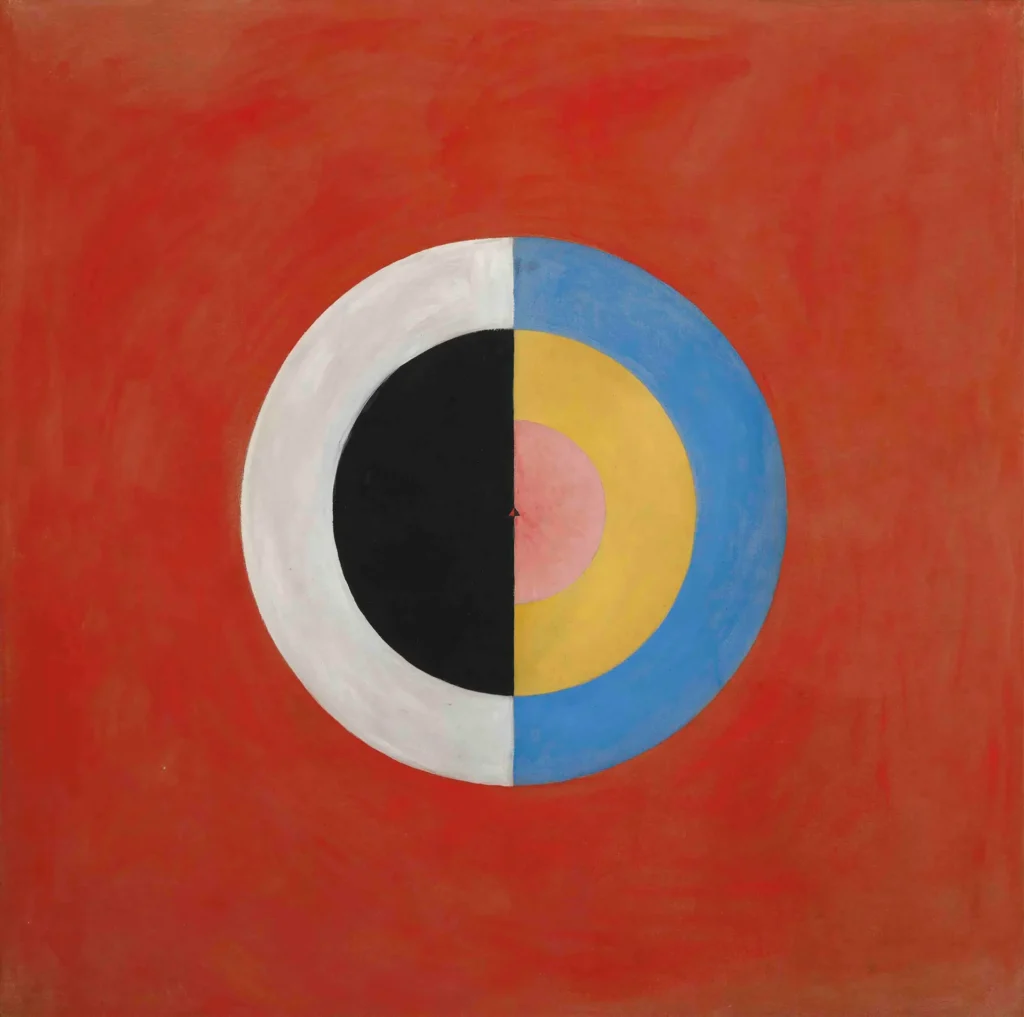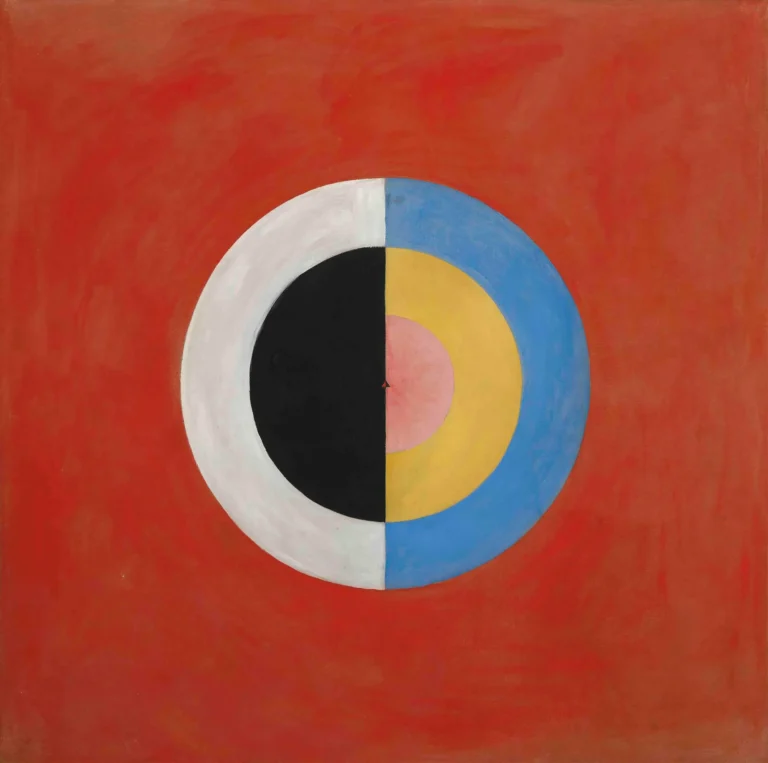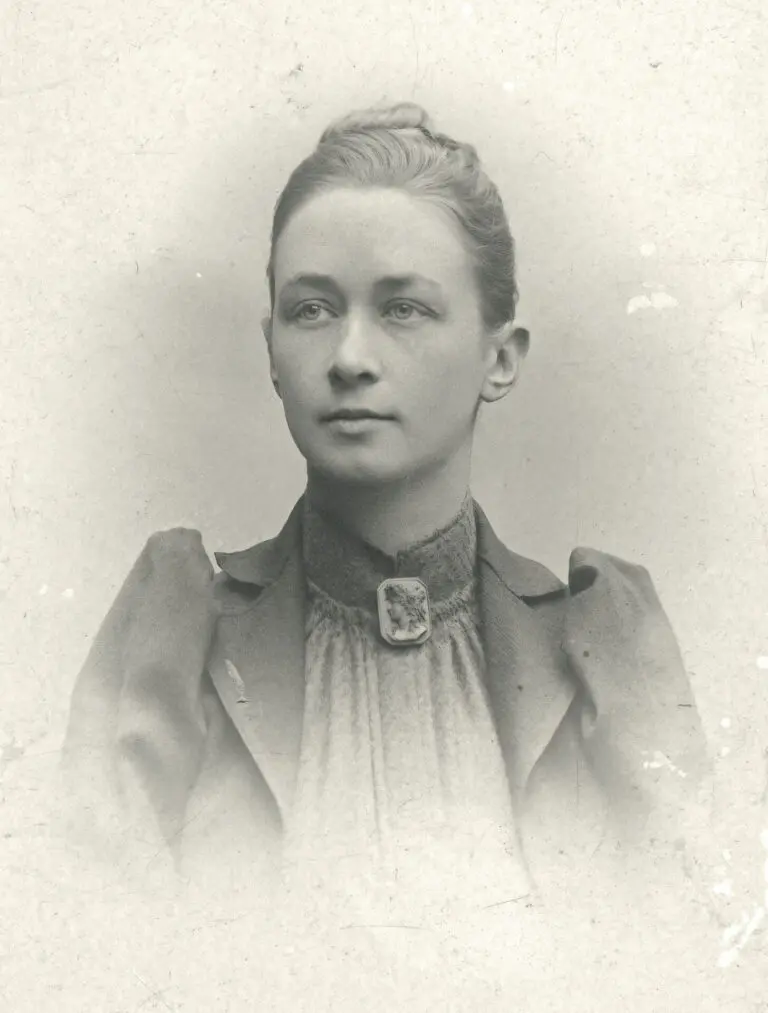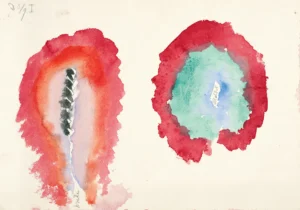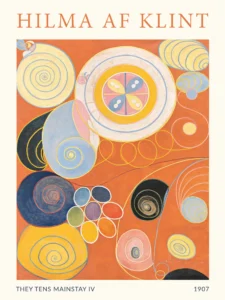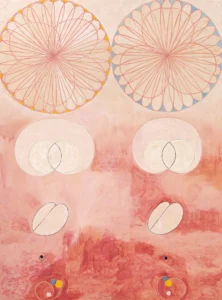Group IX,SUW, No. 17. The Swan, No. 17 (1914-1915)
Created in 1915, 'The Swan, No. 17' is part of Hilma af Klint's 'Swan' series, consisting of 24 oil paintings. This piece epitomizes the artist's exploration of spiritual themes, using geometric shapes and a bold color palette to symbolize the union of opposites. The contrast between the dark and light semicircles alongside a gradient of warm hues creates a striking visual narrative. This artwork, which resides in the Moderna Museet in Stockholm, challenges traditional interpretations and continues to resonate with contemporary audiences.
1914 - 1915
About the Artwork
Hilma af Klint, a Swedish artist and mystic, created 'The Swan, No. 17' as part of her ambitious 'Swan' series, completed between 1914 and 1915. Inspired by her deep spiritual beliefs and Theosophical practices, Klint embedded philosophical concepts within her artwork. The circular motif in 'The Swan, No. 17' embodies her exploration of dualities: the contrasting white and black semicircles symbolize light and dark, while the vibrant blue, yellow, and pink sections reflect the complexities of existence. Although she was a precursor to the abstract art movement, her work was largely unrecognized during her lifetime, as she decreed that it should remain private until years after her passing. Today, her contributions are celebrated, revealing her ahead-of-her-time vision in the context of early 20th-century artistic and spiritual exploration.
Did You Know
Hilma af Klint is regarded as one of the first abstract artists, creating significant works before contemporaries like Wassily Kandinsky and Piet Mondrian. Her innovative approach to abstraction was deeply rooted in her spiritual beliefs.
Af Klint’s artwork was significantly influenced by her involvement with Theosophy and spiritism, where she explored complex philosophical themes related to spirituality, duality, and the nature of existence.
Despite her groundbreaking contributions to modern art, Klint’s works were not publicly shown until decades after her death, illustrating a fascinating story of artistic foresight overshadowed by her contemporaries.




